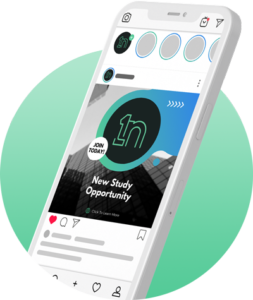
Diversity, Equity, and Inclusion: Why Representation Matters in Patient Recruitment
Diversity, equity, and inclusion—or DEI—isn’t just a good idea anymore. It’s a solid patient recruitment strategy. It’s a necessary ingredient when it comes to regulatory compliance. And it makes clinical trial results all the more impactful and applicable to the broader population.
DEI in patient recruitment refers to policies and procedures that encourage representation and participation from people of different genders, ages, ethnicities, and classes in clinical trials. If researchers are going to produce results that apply to everyone, there must be diverse representation in their enrollment. Otherwise, clinical researchers run the risk of coming away with incomplete data that applies only to a specific segment of the population.
Are you ready to incorporate DEI into your patient recruitment? A strong DEI strategy involves understanding disease prevalence among varied demographic groups, setting enrollment goals that prioritize diverse representation, and modifying existing patient recruitment strategies.
Here are some reasons why diverse representation is important, a few real-world examples of diversity and inclusion in clinical trials, and practical steps you can take today to make DEI even more of a priority.
The importance of diversity and representation
The rewards of diverse representation in patient recruitment include earning and building trust within previously marginalized populations, promoting fairness in healthcare, collecting more accurate data, and ultimately developing better medicine. In fact, these goals often overlap and progressing towards one often leads to advancing towards another.
The New England Journal of Medicine highlighted one clinical drug trial for patients suffering from hypertension. Participants were split into two trials—in the first trial, 15% of participants were Black and in the second trial, fewer than 1% were Black. The study found that giving patients the results from the more representative trial increased the likelihood of Black patients’ believing that the drug would be as effective for them as it was for the trial participants by 20 percentage points.
Real-World Examples Of Why DEI Matters
Because representation builds public confidence in healthcare and produces more accurate clinical findings, FDA legislation mandates that researchers enroll patients from a diverse population when testing a new drug. If your patient recruitment isn’t prioritizing DEI, clinical trials could be delayed or canceled. As recently as 2020, Reuters reported that diversity emerged as the key reason that Moderna’s Covid-19 vaccine trial had been delayed. Black Americans made up only 7% of the trial despite the fact that they are 13% of the actual U.S. population. A greater emphasis on diverse representation from the start could have produced a vaccine more quickly and saved additional lives.
It’s more than just genetics too. DEI ensures that clinical researchers consider socioeconomic factors such as where patients live and what they eat be represented in the trial’s findings. The
National Institute on Minority Health and Health Disparities found that for Hispanics, eating certain foods could increase their risk of asthma and related symptoms. Among participants without asthma, eating a balanced diet was linked to better lung function. For more complete findings in clinical trials, researchers should consider where their patients live, what they eat, and how they feel.
4 ways to incorporate DEI into your patient recruitment
When it comes to patient recruitment, there are various ways that you can ensure diverse representation with your next clinical study:
The 1nHealth solution: Moving patient recruitment forward
Patient recruitment that features a diverse representation helps us all work towards ensuring people from different backgrounds join clinical trials, and that is essential when it comes to advancing health equity. This shift towards inclusivity ensures that your findings are applicable to a broader population and contribute to a more just healthcare system. To learn how 1nHealth can support you with your DEI-centric patient recruitment, contact us here.
1nHealth on LinkedIn
Check us out using the icon above or get in touch with our VP of Business Development Steve Wimmer if you want to learn how 1nHealth can help save your deadlines.

